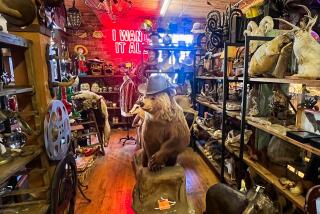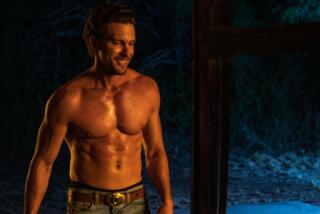Classic Hollywood: ‘It’s a Wonderful Life’ this week
Christmas is coming early this year with a double serving of the beloved 1946 holiday classic “It’s a Wonderful Life” this weekend.
On Friday evening at the Linwood Dunn Theater in Hollywood, the Academy of Motion Picture Arts and Sciences examines Frank Capra’s magical fable from a technical perspective. Oscar-winning visual-effects supervisor Craig Barron (“The Curious Case of Benjamin Button”) and Academy Award-winning sound designer Ben Burtt (“Star Wars”) will share photographic and sound-effects secrets from the film that stars Jimmy Stewart as everyman George Bailey. (The evening is sold out, but there will be a stand-by line).
And on Saturday, Annette Bening, Bryan Cranston and Peter Gallagher will be among the stars at special matinee and evening readings of the movie at the Geffen Playhouse designed to emulate the radio shows of the 1930s and 1940s. The performances are a benefit for the Playhouse as well as the Actors Fund.
“I haven’t seen it in years,” Bening said of the film. “But it is one of the great classics, isn’t it? There is no way you can’t be moved at the end of that.”
Although, the film got Oscar nominations for best picture, director, lead actor, editing and sound recording, the lavish production received mixed reviews from critics and didn’t actually have a wonderful life at the box office. However, the film was rediscovered in the 1970s after the copyright expired due to a technicality. In the 1970s and ‘80s, it was shown every Christmas by local TV stations because it was in the public domain. In other words, it had a second “Wonderful Life.”
As the film opens, Bailey is at the end of his rope because of dire financial problems, but his suicide attempt is prevented by a guardian angel named Clarence (Henry Travers) who shows him what life would have been like for his wife, Mary (Donna Reed), and his friends in the bucolic town of Bedford Falls if he hadn’t been born.
The postcard-perfect Bedford Falls came to life on massive sets built at the RKO Ranch in Encino. “Bedford Falls is another character in the movie,” said Barron. Of course, the ranch is just a faded memory of Hollywood past, he noted. “It is now a housing development, which is ironic that the fantasy housing development of Bedford Falls is now a real-life house development in Encino.”
Not all the sets were original to the film. Most of the studios during the golden age of Hollywood would recycle sets, sound effects and visual effects from film to film. “In fact, some of that street [in Bedford Falls] was originally built for the 1931 film ‘Cimarron.’ And the Bailey house was originally built for ‘The Magnificent Ambersons.”’
Though the film didn’t win any Oscars, the RKO special-effects department did receive a special Sci-Tech award for its falling snow machine. “The way that they actually created those shots was different than traditional methods, where they used bleached cornflakes for snow,” Barron said. “But Capra didn’t want that. He wanted his actors to be able to perform without the sound of crunching cornflakes under their feet requiring additional looping.
The special-effects department came up with a “foam developed for fighting fires,” Barron added. “It was a foam retardant that looked very much like snow when you were able to mix it with a little bit of water and other chemicals. You could spray it out and make it look like falling snow.”
Linwood Dunn, after whom the theater is named, was involved in the film’s special effects, especially the sequence where Bailey jumps off the bridge in his suicide attempt. The jump, said Barron, “was photographed on the interior set, so the water had to be added. There was matte painting and optical printing work in that sequence.”
Barron believes that Capra, who won Oscars for directing 1934’s “It Happened One Night,” 1936’s “Mr. Deeds Goes to Town” and 1938’s “You Can’t Take It With You,” “was at the height of his ability when he made ‘It’s a Wonderful Life.’ That’s why it’s loved today as a classic.”
For information on the screening, go to https://www.oscars.org; for information on the Geffen Playhouse event, go to https://www.geffenplayhouse.com.
More to Read
The biggest entertainment stories
Get our big stories about Hollywood, film, television, music, arts, culture and more right in your inbox as soon as they publish.
You may occasionally receive promotional content from the Los Angeles Times.







